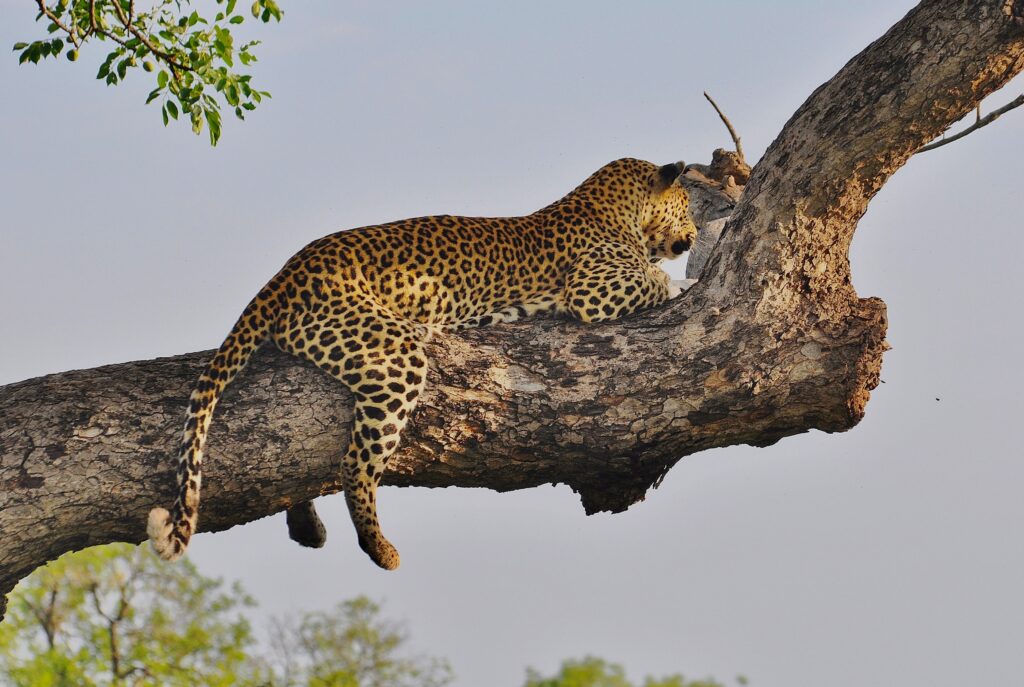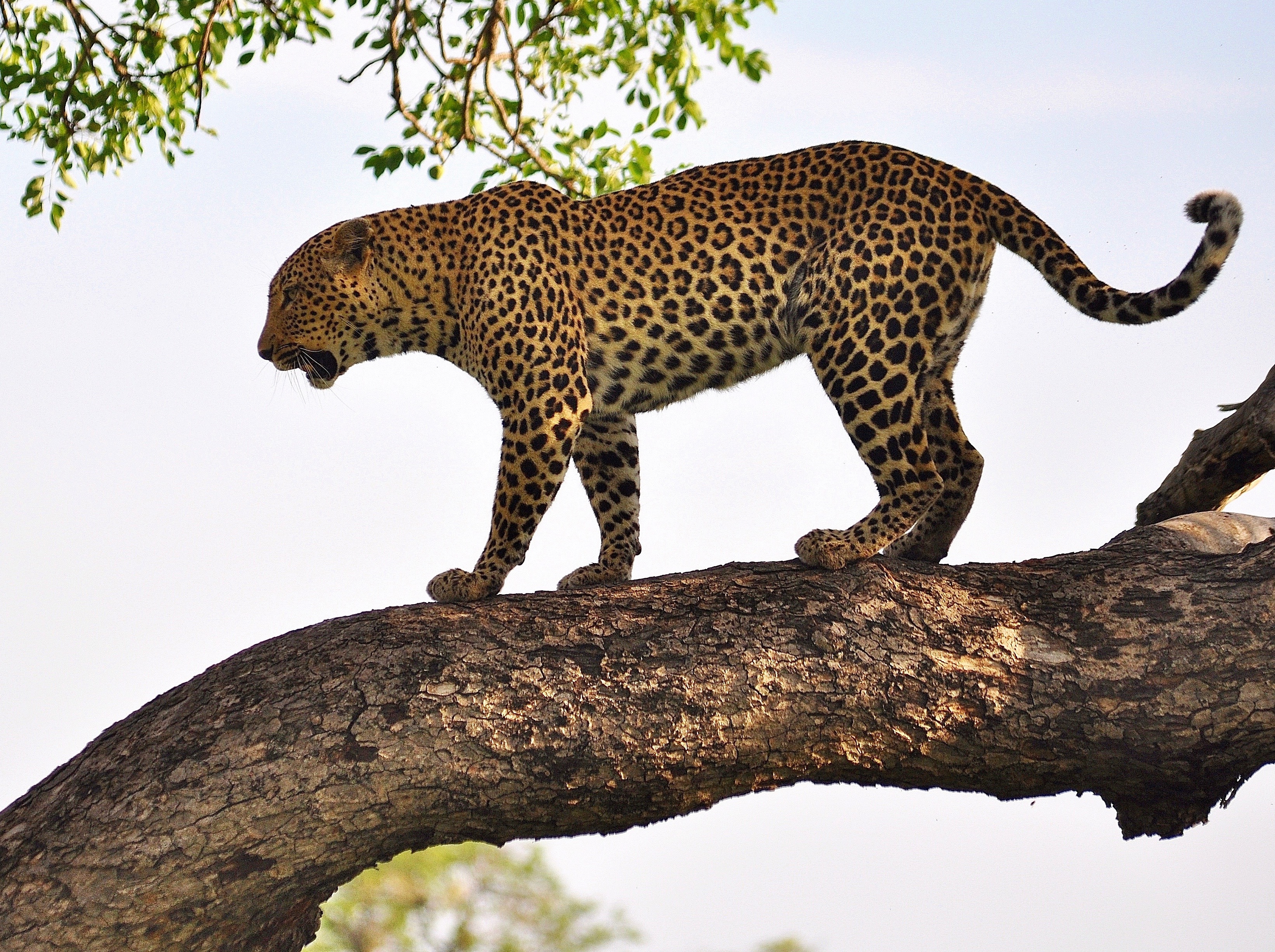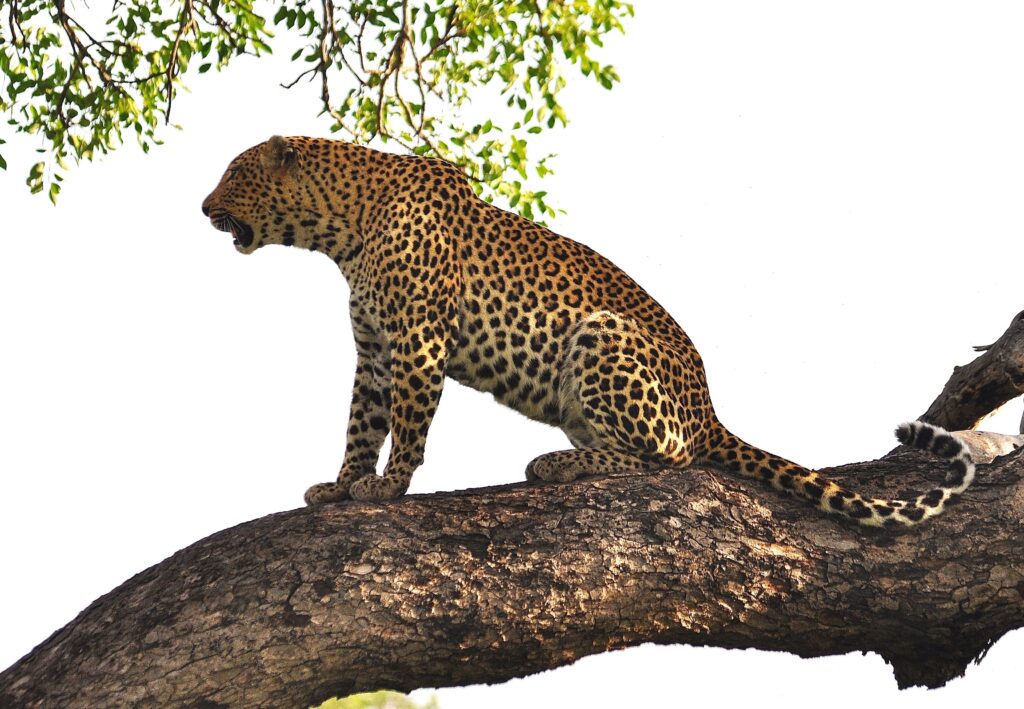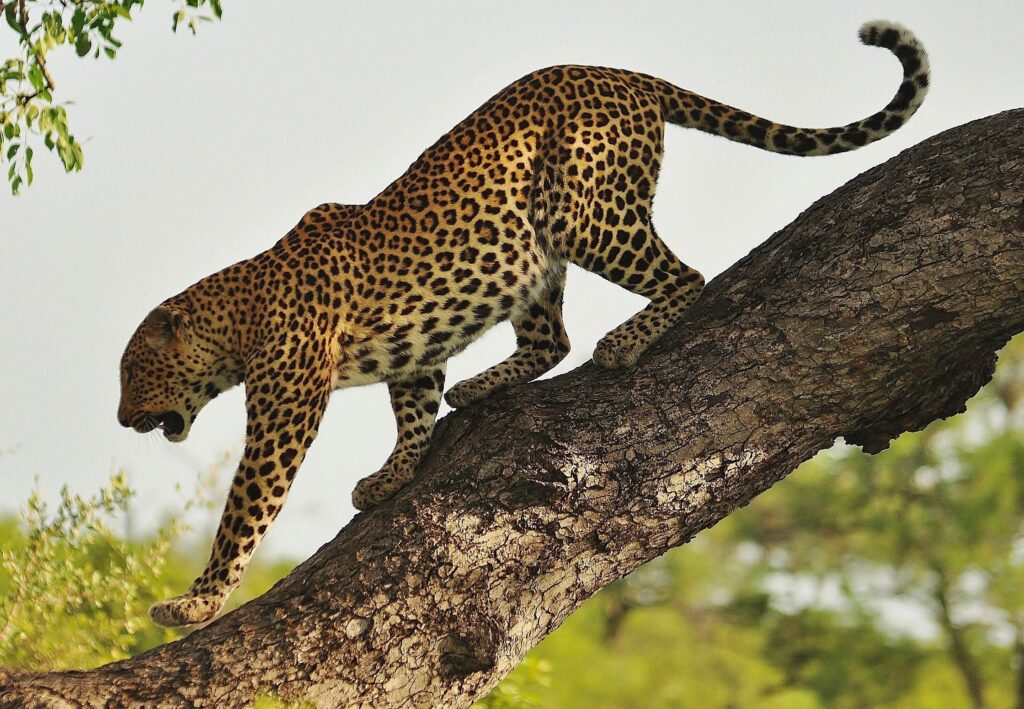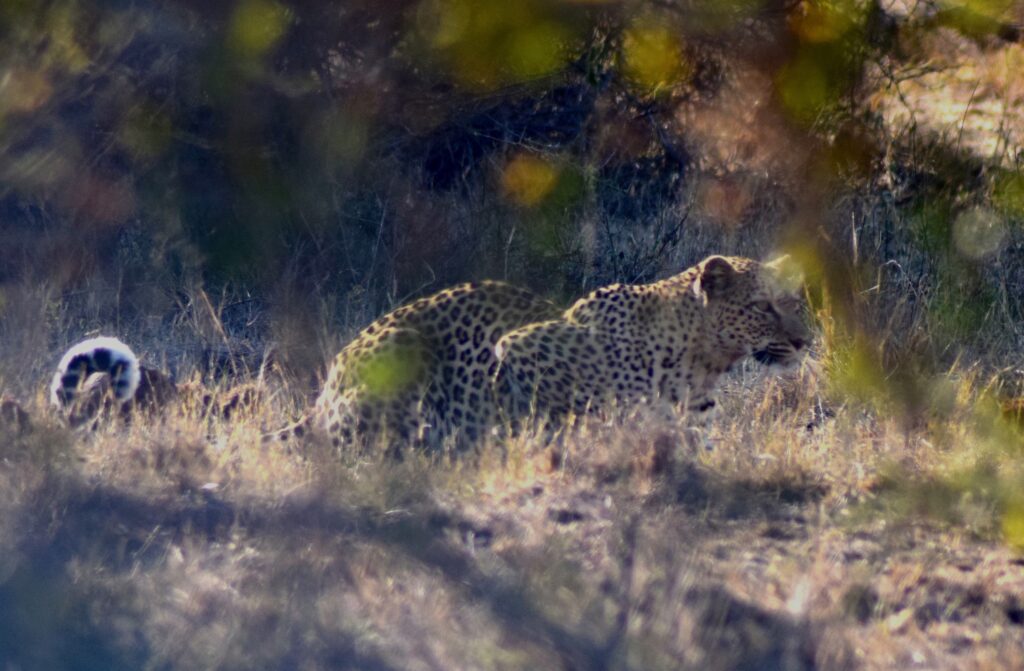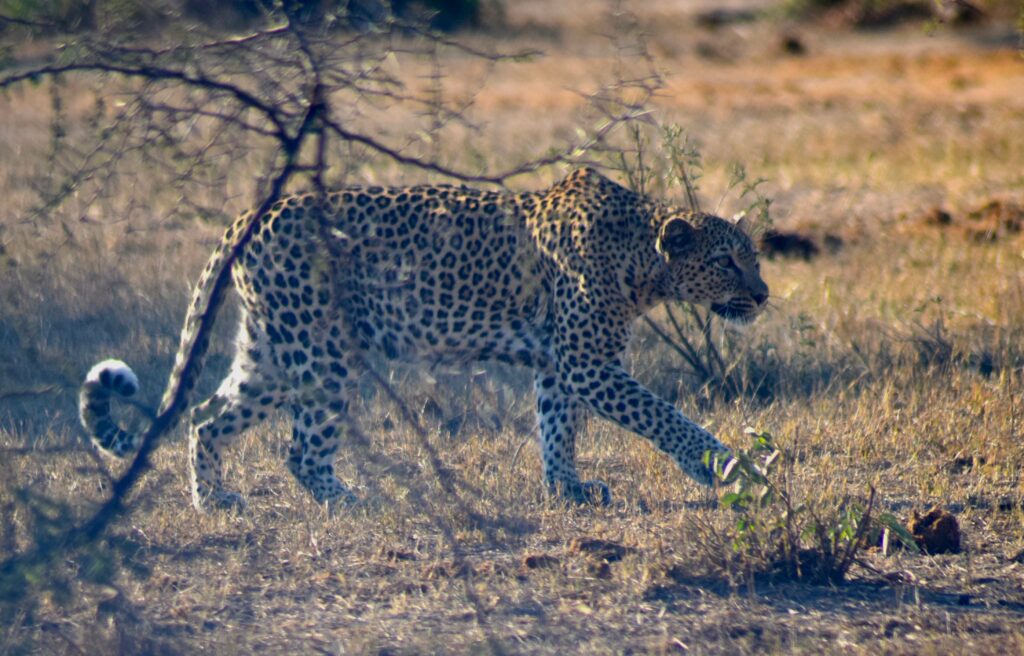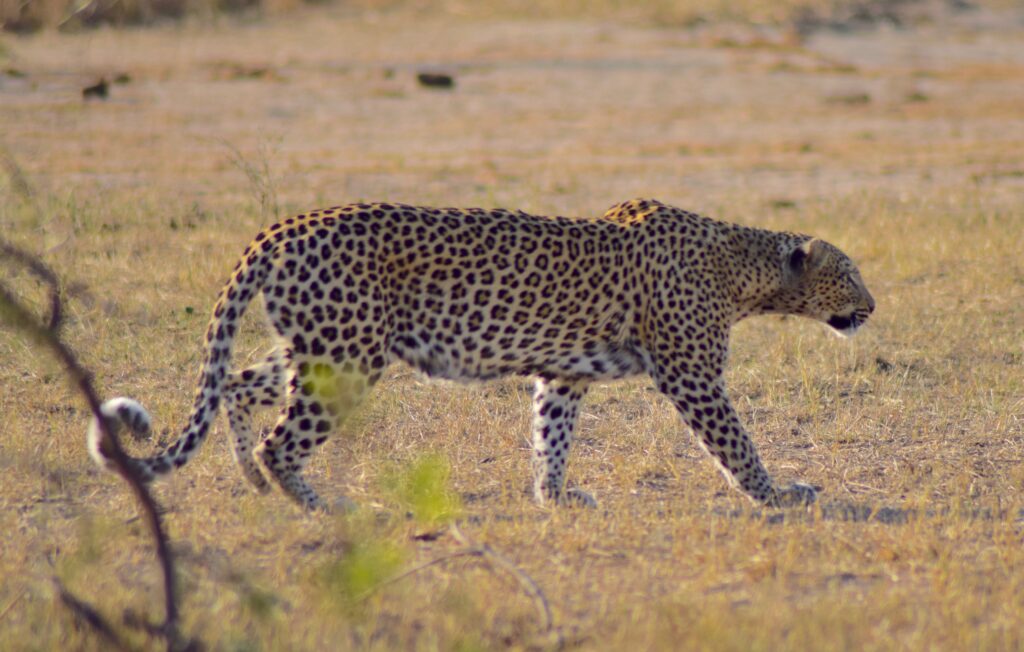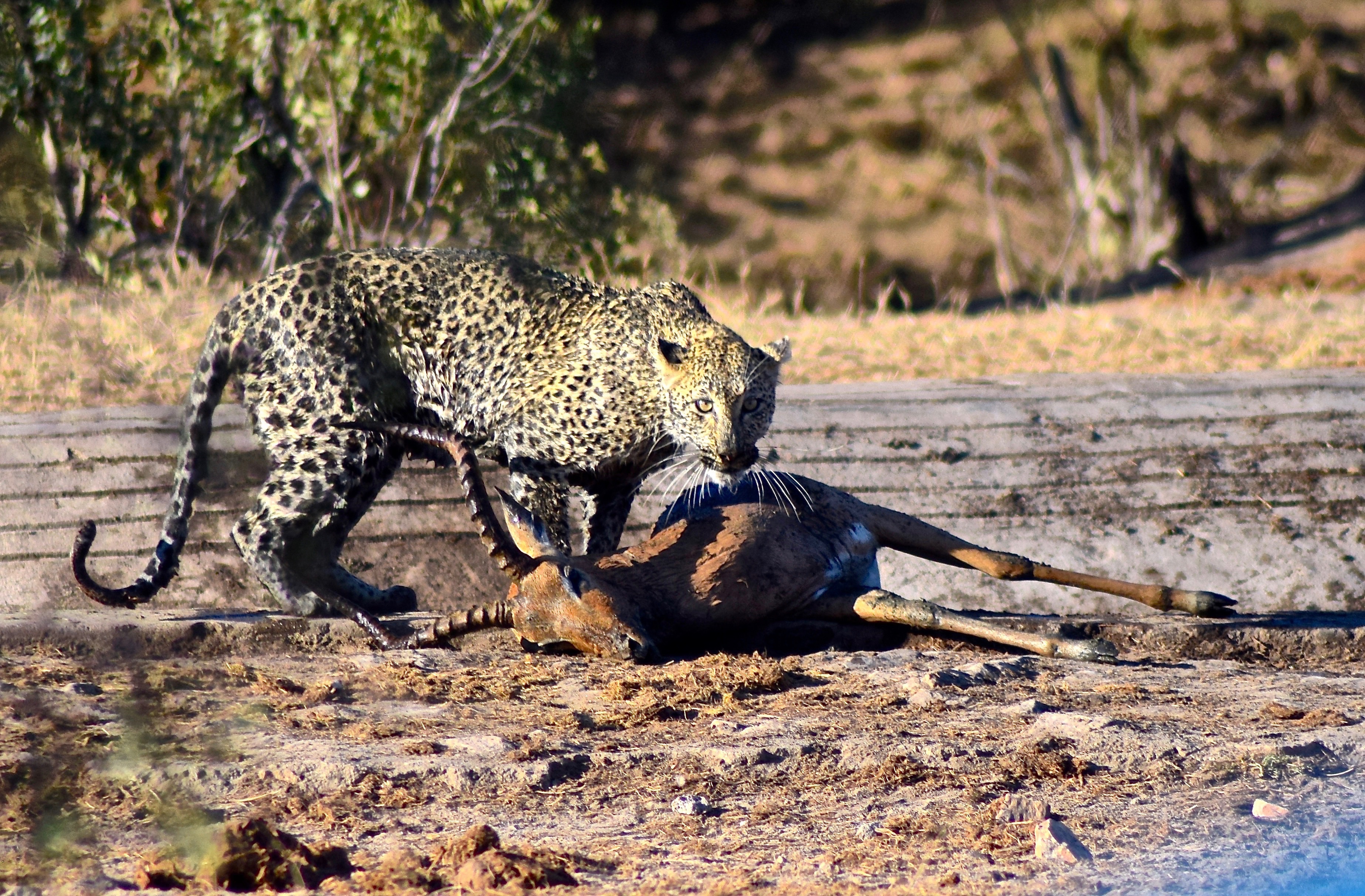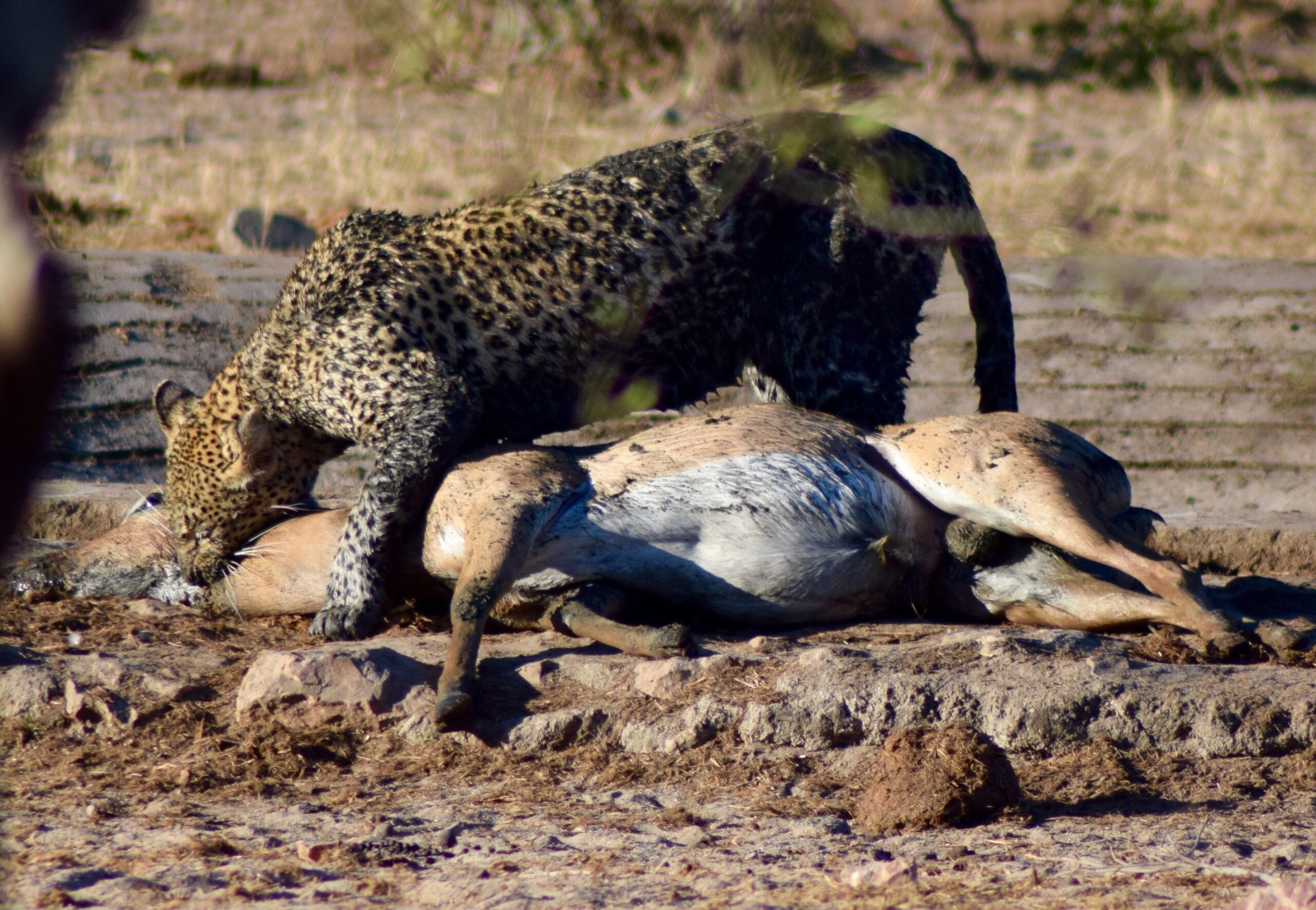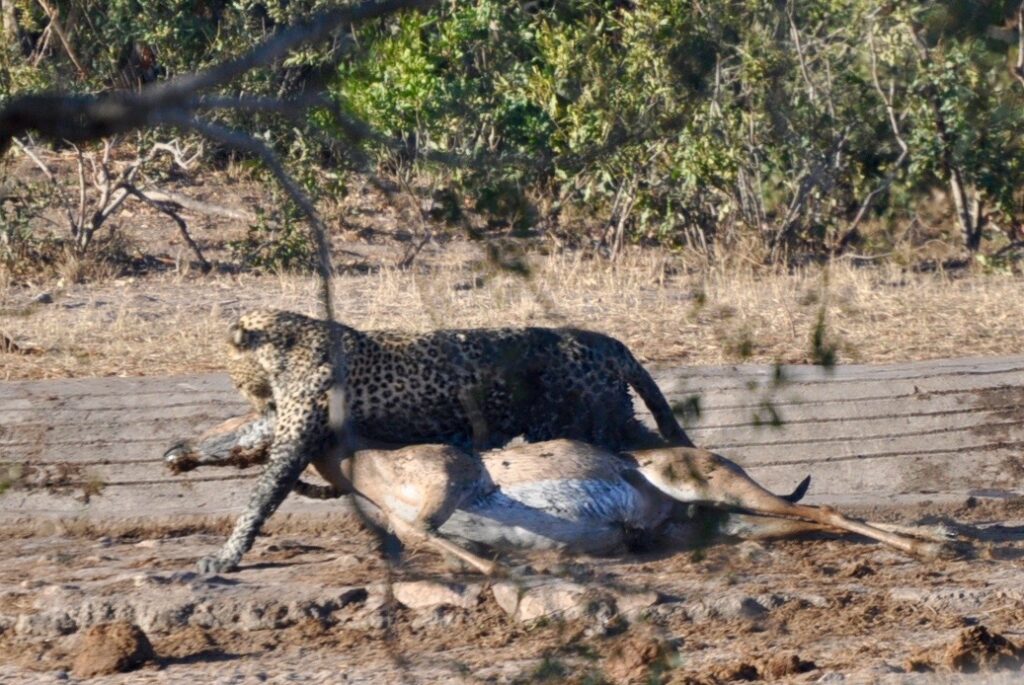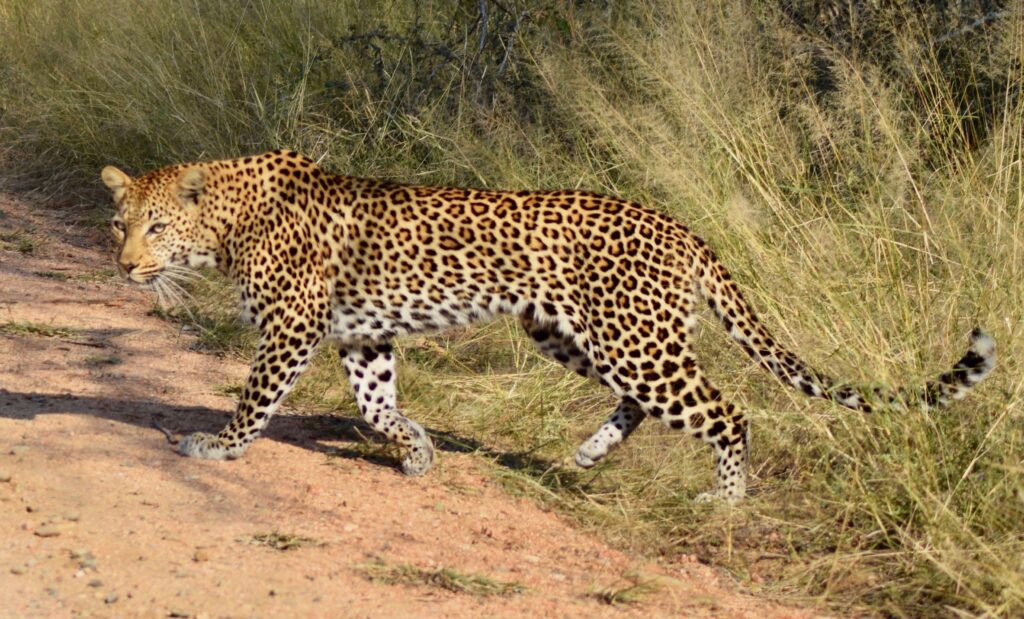
The LEOPARD is my favorite African cat! It is maybe the most beautiful of the big cats in Africa ! Elegant, spotted fur and fascinating skills like climbing in trees, where they often drag their pray into.
The leopard is secretive and elusive – and extremely difficult to trace and locate in the wild. Maybe that is the reason that it’s extra exciting to spot this cat on a safari!

SCIENTIFIC NAME: Panthera pardus
TYPE: Mammals
DIET: Carnivore
SIZE: 92 -190 cm long. TAIL: another 64-99 cm
WEIGHT:
Males 35-75 kg
Females 21- 60 kg
The leopard is the smallest of the four “big cats” in the genus Panthera;
the other three are the tiger, lion and jaguar
Leopards are often thought of as African animals, but leopards live all over the world. They are very adaptable and can live in many different places across the globe. Leopards have the widest range of habitats of all the big cats.
Habitats includes: rainforests, deserts, woodlands, grassland savannas, forests, mountain habitats, coastal scrubs, shrub lands and swampy areas.
Leopards are found in sub-Saharan Africa, the Arabian Peninsula, southwestern and eastern Turkey, in the Sinai/Judean Desert of Southwest Asia, the Himalayan foothills, India, Russia, China and the islands of Java and Sri Lanka, according to the IUCN.

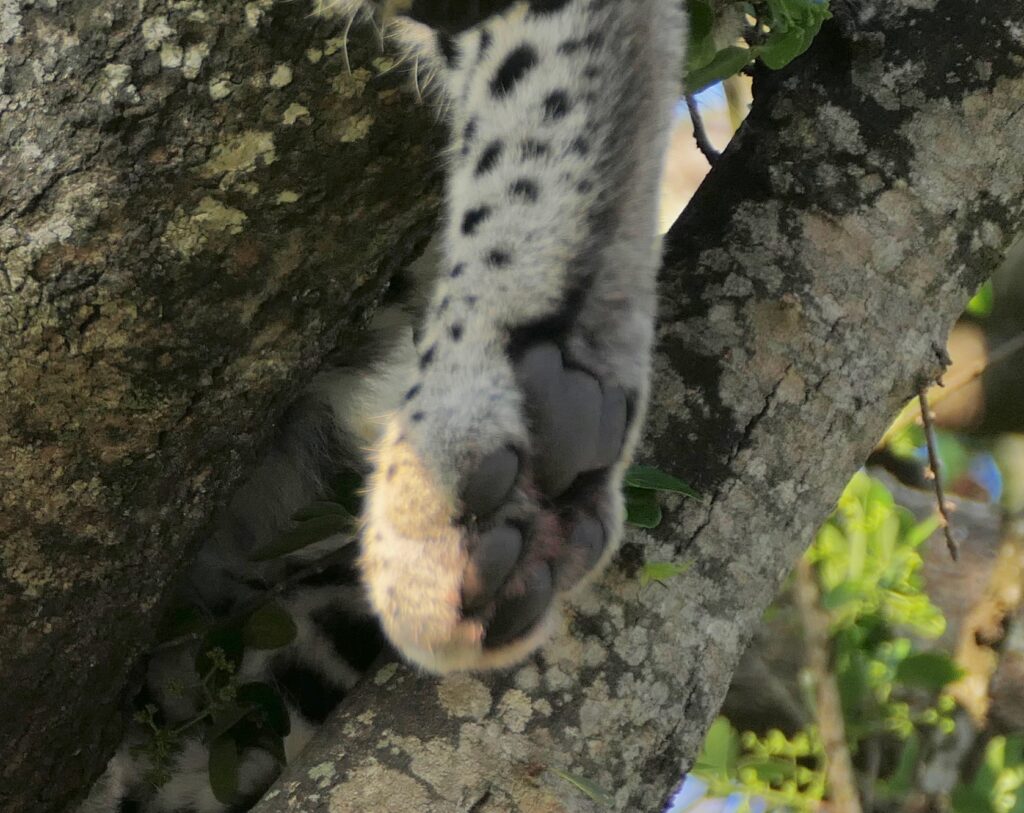
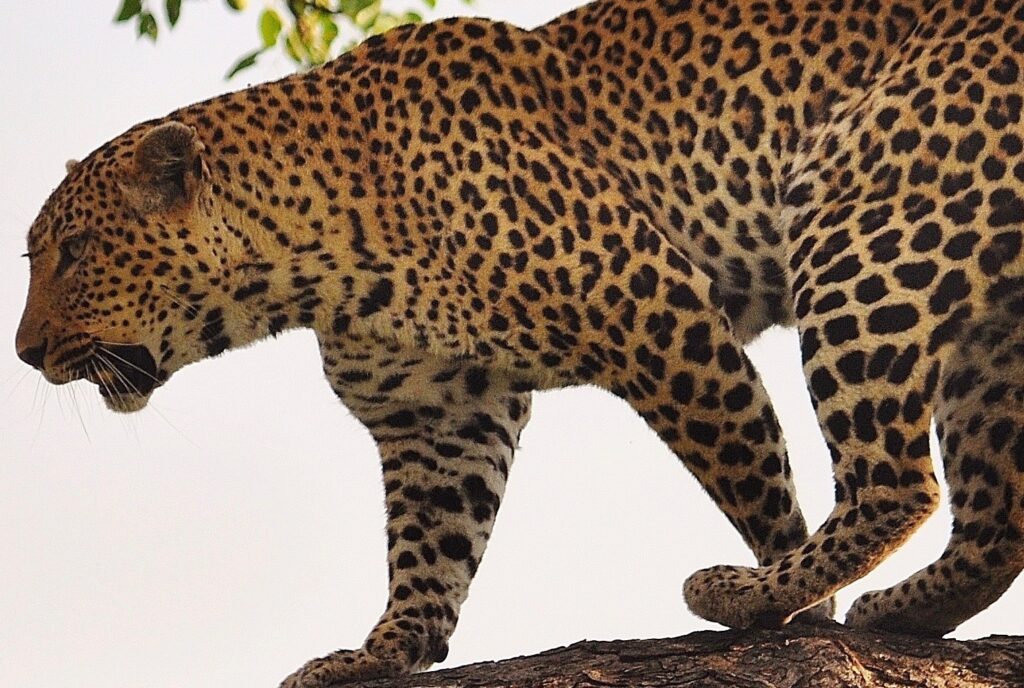
Other facts
LEOPARDS –
- are solitary animals that have large territories. While male territories are larger than females and tend to overlap, individuals usually only tolerate intrusion into ranges for mating.
- have spots that are grouped in rosettes on torso.
- can have black fur with dark spots. These black leopards are often mistaken for panthers.
- are nocturnal and spend their nights hunting instead of sleeping.
( this is one of the reasons that it is difficult to spot) - spend a lot of their time in trees. Their spotted coat camouflages them, making them blend in with the leaves of the tree.
- often drag their prey into trees – because they keep it from being taken by other animals ( lions or hyenas)
- are spectacular hunters and can run up to 58km/h
- survive on a variety of prey.
For example, in some regions of southern Africa, 80% of their diet comprises of rock hyrax. In the Kalahari Desert, they are known to favour bat-eared fox. Leopards also eat fish, insects, reptiles, birds, rodents, porcupines, mongoose, baboons, genets and monkeys - in the wild may live up to 15 years
MORE MEMORABLE MOMENTS WITH LEOPARD :
Leopard in a tree close to the road!
My first time seeing a leopard in a tree! – Kruger Nat.Park 2010
It was an early December morning about 07:00- just north of Malelane Gate. Some cars had stopped by the road – and people were looking at something….a leopard lying on a branch! We were very excited! After a while it turned around – sat down for a moment and then walking down the branch – and jumped down on the ground – and disappeared. We were very lucky to get this moment.
A hunting Leopard:
Another exciting moment – June 2015. Summer in Europe but winter in South Africa – the dry season. The animals go to the waterholes to drink water. A leopard is lying in some bushes not far from a waterhole – south of Skukuza. Just a few cars not far from the waterhole, were lucky to see this event!
The leopard sneaks up on an impala drinking – and manage to kill it in the muddy waterhole. It works hard and drags the prey out of the hole and then further away from us – among the trees on the other side. And most likely drag it into a tree – but unfortunately that is out of our sight..
WOW -what an amazing experience!
Other memorable moments:
(with links to more photos and the story behind, told in other sites.)
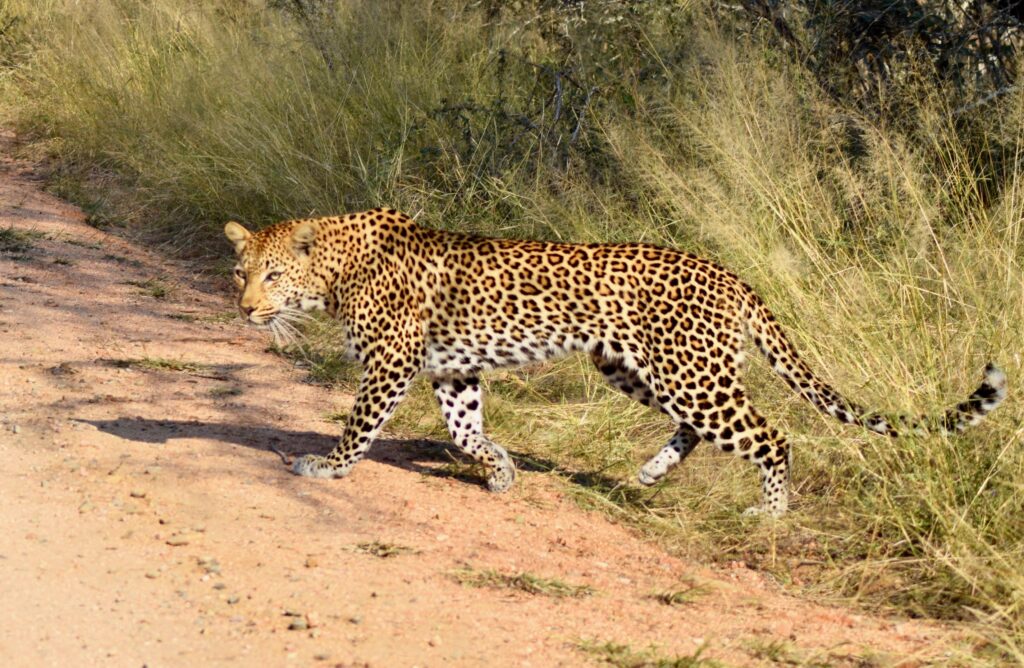
Leopard on the go
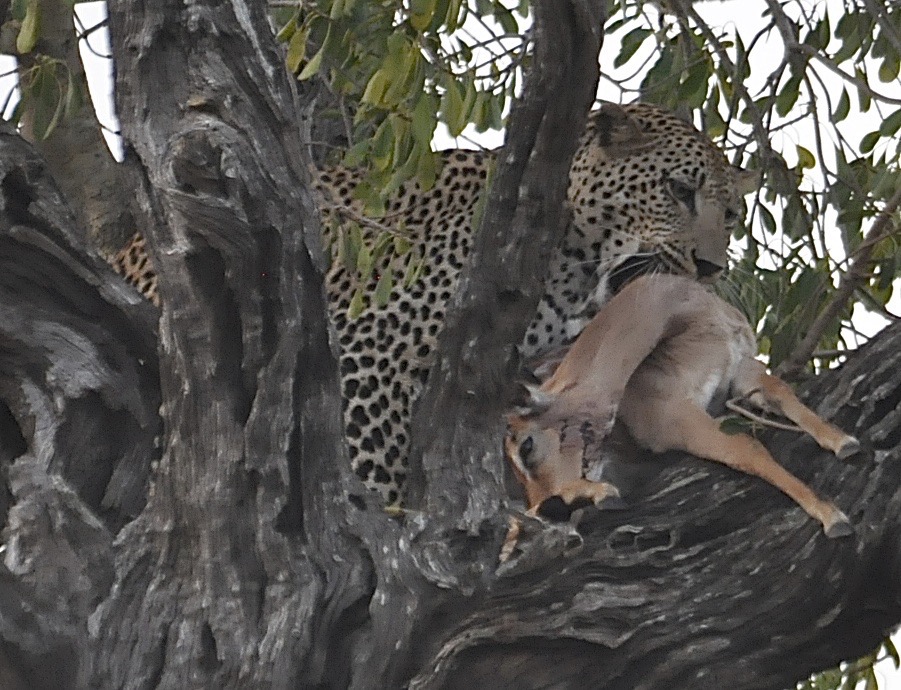
Leopard in a tree with prey
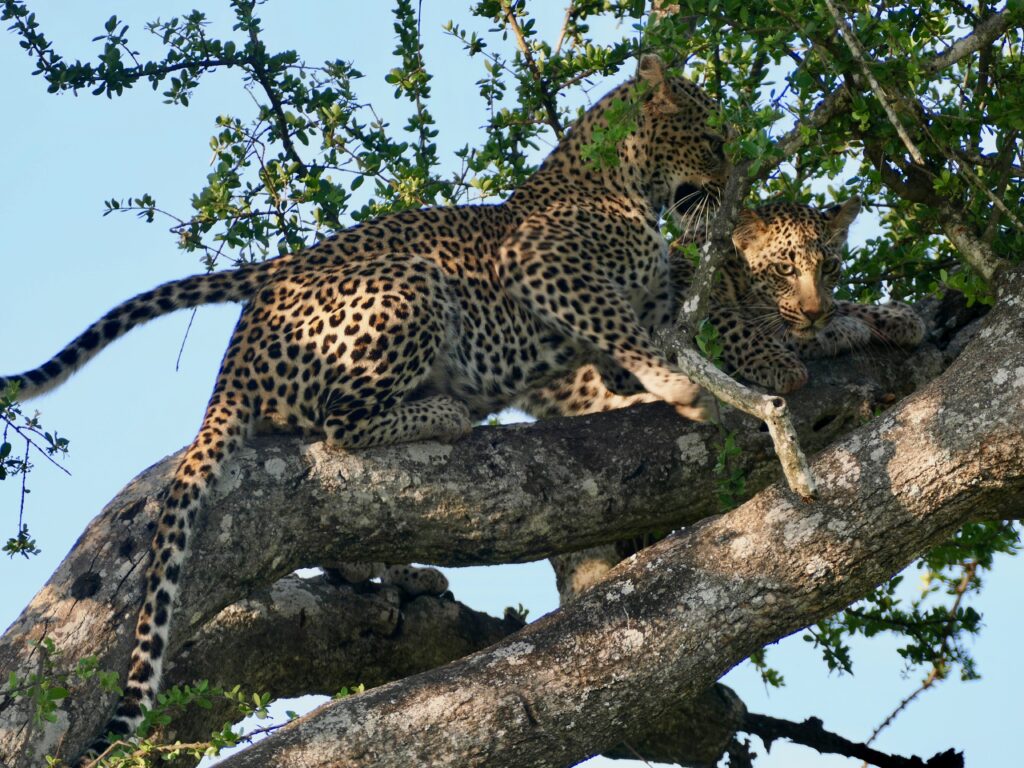
Two leopards in a tree

